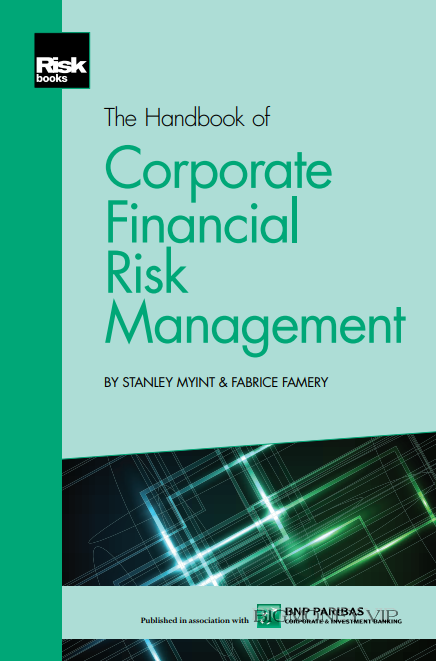The Handbook of Corporate Financial Risk Management by Stanley Myint & Fabrice Famery

Part I
Funding
Funding
The sine qua non of every business and personal endeavour is the
necessary funding. No matter how great the business idea or how
brilliant its people, companies cannot exist if nobody will invest
in them. Witness the political and economic debate about how to
jump start the world economy at the moment of deep crisis we are
witnessing in 2012 and you will notice how funding has become
intricately linked to growth. So the first and arguably most important
source of risk for every company is lack of funding.
Let us start with a bold statement: “It is impossible to talk about
corporate risk management without first discussing funding”. Before
we explain why we think this, let us define the terms. Funding,
in the broadest sense of the word, means provision of monetary
resources for a project or a company. Funding can take many forms,
and this chapter focuses on two main sources of unsecured fixedincome
funding (or simply “debt”), ie, bonds and loans. Bonds are
financial instruments through which a company borrows money
from investors for a fixed period of time, normally up to 30 years, and
in most cases they carry a fixed coupon or a floating coupon linked to
a Libor (or Euribor) rate. Loans are extended to a company by banks
either bilaterally or through syndication among several lenders, and
typically they pay a floating coupon and have a maturity of up to
five years.
Since the focus of this book is risk management, and not funding
on its own (as well as for obvious reasons of space), we decided
to focus on debt at the cost of all other potential sources of funding.
This excludes such important topics as equity, convertibles and other
hybrid instruments, secured bonds, and many other kinds of rare
and structured products. One could write a whole book about each
one of these topics and in fact, many books have been written.
The question of how much debt a company should have (known
as “optimal capital structure”) has been extensively studied. The
two traditional competing schools of thought are the trade-off theory
and the pecking-order theory. Trade-off theory tends to determine
the optimal debt amount as that point beyond which the tax benefits
The Handbook of Corporate Financial Risk Management by Stanley Myint & Fabrice Famery




